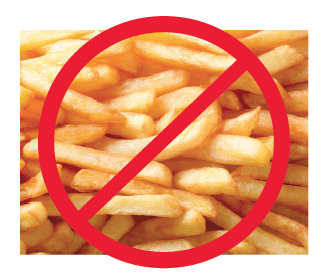Wagons Don’t Have Seatbelts

Have you ever started a diet, a new workout routine, a yoga practice and been doing so well but then got sidetracked and let your new diet, routine or practice fall by the wayside? I heard it best from a professor of mine in college, “good habits are hard to make and easy to break and bad habits are easy to make and hard to break”. If wagons had seat belts we could all easily jump on the newest-latest-greatest bandwagon and roll on down the street to fame, fortune, great looks and optimal health. Most of us have trouble however staying on the wagon because we lose our purpose or the pain of change overwhelms us.
If we are truly going to live an optimal life, thinking well, moving well and eating well, we have to make good habits to get us there. A habit is defined as a regular tendency or practice. In order to make those good habits stick and make sure we don’t fall off the wagon we need to have purpose, and then the habits become second nature.
Our brain is a very complex organ that interprets sensory stimulation from the world around us and then creates motor responses and conscious thoughts based on that sensory stimulation. Human beings have the most complex nervous system of all creatures on earth. Our nervous system evolved and developed to incorporate the nervous system that every creature on earth also has. Any creature with eyes sees with the occipital lobe of their brain, every creature that hears sounds hears with the temporal lobe of their brain.
The lizard brain, or to be more anatomically correct, the limbic system responds to pain and pleasure. Lizards are not that smart but they know what they like and they know what they don’t. The limbic system sits on top of the brain stem above your spinal cord and is part of the relay circuits sending messages up and down your nervous system. When a person wants to change a habit often times there is pain associated with the change. If you ever stopped a caffeine addiction, you probably noticed you got a headache. Or if you ever tried to quit using tobacco, there is a nicotine withdrawal that causes you to want to keep smoking. These painful symptoms are creating fight of flight responses in our body, firing off the limbic system causing you to feel the pain signals and driving you back towards your comfort zone and that bad habit that you grew accustomed to and loved.
If you want to do a fun experiment with people who are truly addicted to something ask them to quit their habit and watch their reaction. In most cases a caffeine addicted coffee drinker would rather murder their best friend before giving up their morning cup of joe. Unfortunately it’s not truly their conscious’ fault, it’s the way their nervous system has been wired. Often times there are endorphin molecules released at the same time we stimulate the limbic system which reinforces the love response contributing to our habit. Survival of the species wouldn’t get very far if we didn’t enjoy the process of love making, right?! Well the same chemical signals are perpetuated in habits sometimes to a lesser extent and sometimes to a greater extent but the brain chemistry of habits is the same. We have to understand this process if we want to make a positive change in our life because it is so easy to get pulled back into feel good brain chemistry. The only thing that can change the addictive brain chemistry of habits is a clear and precise purpose as to why you are going to change.
When you start thinking about your reasons for wanting to change you have to be very clear and dedicated. A person can make any change for a week or 10 days but going beyond that to 2-3 weeks or a month or longer truly takes discipline and dedication to the change. The human brain will often accept temporary changes or short-term discomfort to accommodate short-term goals. If you want to lose 10 lbs before you go on that tropical vacation you can survive on carrot sticks and tofu burgers for a week, but as soon as you get to your destination all bets are off and your back to eating French fries and ice cream.
If you change your purpose however and say I want to lose 10 lbs because I want to feel better, have more endurance when I exercise and play with the kids, and reduce my risk of stroke and heart disease it becomes much easier to stick to the changes and create a new lifestyle. It has been shown that if a person can consecutively stick to an exercise program for 6 months they are far more likely to workout for the rest of their life. I find that most habits take anywhere from 90-120 days to really be ingrained into the nervous system.
The reason for this is a red blood cell has that same lifespan and if you truly want to make a biological change you have to change every cell of your body!
When you find yourself wanting your life to be different, really ask yourself why you want it to be different and create a sense of purpose around the changes you want to make. If you create your purpose you are more likely to be able to get back on the wagon when you fall off instead of rolling back down the hill to the place you started from with your bad habits. Making healthy habits to eat a healthy mostly paleo diet, drink half your body weight in ounces of water each day, get plenty of sleep, exercise regularly, and keep a positive mental attitude will help you live a healthy, natural, and optimal life.

